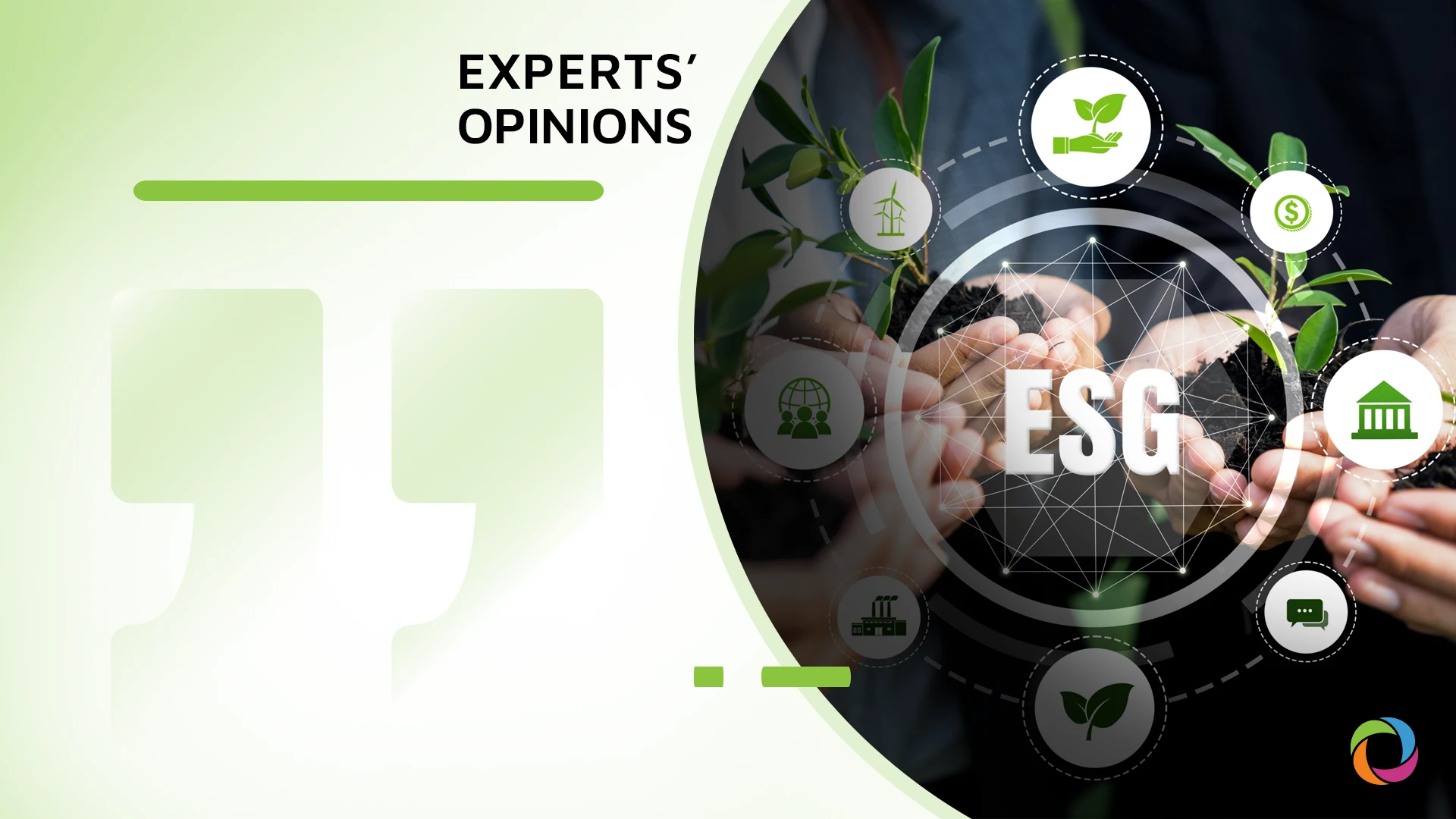Opinions regarding ethical supply chains are becoming more and more relevant in the context of globalization and the rising demand for sustainable products. An ethical supply chain ensures the rights of workers, environmental protection, and transparency at all stages of production and distribution. Therefore, many businesses are now on a mission to create supply chains that are both sustainable and ethical, as well as competitive. While ethical supply chains contribute to the broader goals of sustainable development, they also bring many challenges for organizations. One of the main difficulties is the higher cost of products from ethical chains, which can discourage consumers. How can we find the perfect balance in this equation? Check out some opinions below.
Key Takeaways:
- Slavery, forced labor, and human trafficking are among the most significant threats to ethical practices within supply chains.
- According to experts, ethical supply chains support sustainable development goals, particularly those focusing on climate action (SDG 13), life on land (SDG 15), and decent work (SDG 8).
- Organizations can address the challenges brought by implementing ethical supply chains by leveraging technology for transparency, diversifying their supplier base, and building collaborative partnerships with local communities and NGOs.
- Regulatory frameworks such as the EU deforestation rules may burden suppliers in developing markets, raising concerns about inclusivity and marginalizing poorer nations, necessitating balanced, cooperative solutions.
DevelopmentAid: How do ethical supply chains contribute to the broader goals of sustainable development, and what are the key areas where they have the most significant positive impact?

“Over the past decade, ethical supply chains have been crucial in contributing to the achievement of sustainable development goals by integrating social, economic, and environmental considerations. As organizations reach the grassroots and expand beyond borders, this integration acts as a key driver in reducing environmental impacts, improving ecosystems, and enhancing social equity and access. They help everyone in the link to understand the supply chain process (sourcing of raw materials, waste management, recycling, finding nature-based solutions, and reducing carbon footprints), directly contributing to Climate Action (SDG 13) and Life on Land (SDG 15), among other goals. Additionally, by practicing fair labor, promoting safe working conditions, supporting smallholder farmers, entrepreneurs, and start-ups, and ensuring equitable wages, Fortune 500 companies like Maersk and Unilever champion goals such as Decent Work and Economic Growth (SDG 8), Reduced Inequalities (SDG 10,) and No Poverty (SDG 1). Furthermore, humanitarian players who practice ethical supply chains also contribute to making a cumulative impact on the SDGs. Enhanced transparency and governance over ethical supply chain practices build trust and accountability with stakeholders, promoting Peace, Justice, and Strong institutions (SDG 16) and environmental stewardship. In conclusion, as global awareness of ethical issues intensifies, ethical supply chain practices have become powerful enablers for achieving an equitable and sustainable global economy, further solidifying the organizations’ reputation as leaders in sustainable business practices.”

“Sustainable development is of more responsibility to corporations – not INGOs or the UN or governments – because of the sheer comparative scale, and also their regulatory requirements are increasingly being forced to be accountable. The national regulatory frameworks refer to this as SCOPE 3 reporting, whereby a large company oversees ensuring its Tier 1, 2, and 3 suppliers are meeting ethical standards through ESG. If a company can get their act together beyond reporting on their own impact (Scope 1 and 2), then they are bearing the onus of governments to make sure smaller suppliers are ethical and following ESG requirements.”

“One of the greatest strengths of creating sustainable change through value chains is that it is easier to effect change when one has buying power and therefore a captive audience. For example, with recent EU regulations pertaining to deforestation, the EU could have lobbied various countries around the world to join in deforestation mitigation, but would likely face challenges of finding common ground and incentives, and the process would require extensive discussions and time. Instead, with the adoption of the EUDR, the EU focused on EU-based companies and created strict regulations for compliance, which considered the entire value chains of those companies, whether EU-based or not. EU companies, therefore, have to work to ensure that the sustainable outcomes are achieved for their own compliance purposes, and can readily incentivise their suppliers across the world through their own buying power.”

“In a globalized world, multinational companies are interdependent on either outsourced materials or transnational labor for the various components of the supply chain of production, which consequently can be subject to a variety of standards and conditions of employment. Other local companies configure their logistics and distribution structure around networks of local suppliers. To understand the impact of ethical supply chain practices, we have to first understand how a supply chain process works. The commercial cycle goes through stages of planning, sourcing, manufacturing, distribution, Inventory control, and return management. From a sourcing perspective, ethical standards entail transferring the responsibilities of fair environmental and labor practices to the suppliers as procurement requirements under contract. Companies that embrace ethical supply chains can also build a long-term relationship with strategic partners to secure inputs are produced under favorable conditions (i.e., they exclude child labor, human trafficking or money laundering) and to certify occupational safety and health control standards. From a production perspective, reducing dependence on natural resource consumption (fuel, gas, water) to acceptable levels, thus contributing to reduced greenhouse gas emissions, is a paradigm that supports ethical standards through certification (e.g., ISO 14000). The process of applying ethical supply chains can also be illustrated through two steps of upstream (raw materials sourcing, production, distribution) and downstream activities (commercialization, consumption) directly impacting aspects of consumer and enterprise costs such as climate conscious production (the use of renewable energy and low water consumption) and logistics (e.g., an electric fleet and IoT technology), reduced waste (food, energy, chemical) sustainable packaging (recycled materials), fair animal treatment, inclusive labor and consumer health.”

“Ethical supply chains are characterized by fair labor practices, environmental sustainability, and responsible sourcing. They are vital to sustainable development. One of their key benefits is the promotion of social justice. By ensuring workers receive fair wages, have safe working conditions, and respect for their rights, businesses contribute to reducing poverty and inequality, which enhances the overall well-being of communities. Ethical supply chains also play a critical role in environmental protection. Through sustainable sourcing, businesses minimize their environmental footprint, reduce waste, conserve resources, and help to combat climate change. These practices are essential for safeguarding the planet’s biodiversity and ensuring a sustainable future for coming generations. Additionally, ethical supply chains support local economies by sourcing from small-scale producers and fair trade organizations. This strengthens rural communities, promotes economic development, and curbs rural-urban migration, thereby reducing poverty in disadvantaged areas. For companies, ethical supply chains also bring financial advantages. By committing to social and environmental responsibility, businesses can enhance their reputation, attract socially conscious consumers, and foster customer loyalty, leading to long-term financial success. The key areas of positive impact include labor rights, environmental protection, human rights, and community development. Ethical supply chains promote fair wages and safe working conditions, uphold human rights, reduce greenhouse gas emissions, and support local communities. In doing so, they help to create a more equitable, sustainable world while contributing to both social and economic development.”

“There is a variety of opinions on the obligatory regulations concerning ethical standards in the supply chain that European businesses will need to adhere to in the future. Business ethics are crucial, and every company acknowledges their significance for sustained growth. Nonetheless, if it begins to increase bureaucratic costs for companies, resulting in unfair competition rules, the question of its validity is brought up. The ethical supply chain, with varying regulations worldwide, assumes the dominance of Western cultural values. Non-aligned nations would encounter difficulties in expanding their exports and boosting their economic development, further widening the gap between the wealthy and the impoverished, creating a contradiction to the principles of global sustainable development. When ethics and regulations are imposed instead of mutually accepted, the difficulties in efficiently managing a globalized supply chain will harm the compliant business and increase its costs. The ethics within the supply chain prompt a debate regarding what actions are deemed ethical and which are not. By acknowledging the unique ethical beliefs of each nation and coordinating the rules accordingly, these discrepancies could foster a more welcoming atmosphere based on consent and mutual respect.”

“The term “sustainable supply chain” often inherently suggests connecting the Global North and South along a singular value chain for a particular commodity or from a commodity to a finished product. One of the quickest and lasting strategies for sustainable supply chain development for all those involved is the processing in the country of origin of the raw material, specifically to drive margin capture, for the purposes of attracting foreign currency into the country (in most cases). Exploring transformation to a finished or nearly finished product at the country of origin is most of the time a win-win for everyone up and down the supply chain. Intentional and conscious management is critical, too, as is the case in the private sector, everywhere in the world.”
DevelopmentAid: What are the main challenges organizations face when implementing ethical supply chain practices, and how can these challenges be effectively addressed?

“Implementing ethical supply chain practices presents several challenges for organizations, especially for those pursuing ambitious sustainability goals. The primary challenges include the high costs associated with ethical and sustainable sourcing, maintaining transparency, and monitoring compliance across complex multi-tiered global supply chains. Organizations like Walmart leverage technology to address these challenges by implementing robust strategies such as predictive analytics, AI, and blockchain for better visibility and traceability. These strategies have led to optimized inventory management and adherence to ethical standards across its supply chains. Another significant challenge is the resistance to change from suppliers accustomed to traditional, less sustainable practices. According to a report by the Ethical Trading Initiative, 44% of organizations reported difficulty in getting suppliers to comply with new ethical standards, often due to cost and lack of infrastructure. To address these challenges, organizations must develop vigorous strategies like diversifying supplier portfolios, developing contingency plans, and creating a green supply chain structure. Collaborative efforts like partnerships with NGOs, suppliers, and local communities can help to align interests and promote capacity-building initiatives. In the humanitarian field, the ethical supply chain must be risk-resilient and balanced to meet urgent needs during emergencies and long-term environmental prospects. These strategies help to mitigate the challenges and enable organizations to build resilient, ethical supply chains to champion long-term sustainability goals.”

“The issue starts at the tendering stage, and this need not follow donor requirements, but instead national regulatory disclosure requirements. Essentially, most countries have their own requirements for corporations and if NGOs were to actually be treated as companies in their own jurisdictions instead of following foreign donor requirements, then there would be more oversight and accountability.”

“Of course, the counter side to this is that those towards the top of the chain often have the most power and can then force requirements on suppliers, sometimes ignoring the realities and challenges of those sitting towards the bottom end of the chain – especially in remote, vulnerable, and emerging market contexts. This can result in the implementation of policies and approaches that ignore the realities on the ground and which may have unintended consequences on the livelihoods of the most vulnerable. To avoid such pitfalls, it is critical to engage stakeholders at all levels of the value chain and ensure that solutions are co-created, sustainable, and beneficial for all. Creating change through value chains can be a powerful tool, but it is not one that should be abused, and greater care should be taken to ensure inclusivity and bottom-up approaches.”

“There are setbacks associated with implementing an ethical practice that can have an impact related to additional resources being required (thus rising financial costs) for monitoring the progress of lean and improved operations. As such, these costs can be associated with suppliers that don’t have the structure to comply with certifications, given their small-scale production. There are also risks associated with potential supply chain disruptions (extreme weather, political factors), which would trigger seeking alternatives through new suppliers. There is also the possibility of national monopolies operating under regimes that circumvent regulatory requirements. To counter these setbacks, companies should think of transitioning from a brick-and-mortar-only model by incorporating an e-commerce platform marketplace to consolidate warehousing and distribution centers, which would simplify manufacturing, transportation, and energy use. There is also the suggested approach of using blockchain and AI as a means to trace and audit ESG goals within a company’s departments and supplier base.”

“Implementing ethical supply chain practices can be challenging due to several factors. The complexity of global supply chains makes it difficult to monitor and ensure compliance across all levels, while a lack of transparency can hinder efforts to identify and address ethical issues. Cost pressures are another obstacle, as adopting ethical practices often involves additional expenses, which may be difficult for businesses facing competitive demands. Furthermore, cultural and regulatory differences across regions complicate compliance efforts, as varying norms and regulations create inconsistencies in enforcement. An additional challenge lies in the perception of ethical supply chain initiatives by some managers who may view them merely as marketing tools rather than integral components of corporate responsibility. Addressing those challenges requires both business strategies and government support. Businesses can enhance transparency using technologies like blockchain, conduct supplier audits, and integrate ethical practices into their long-term strategy to reduce costs while improving brand reputation and operational efficiency. To address cultural and regulatory differences, companies should collaborate with local stakeholders, including governments and NGOs, to tailor their practices accordingly. Fostering a culture of ethics internally, through training and setting measurable goals, helps to counter the perception that ethical initiatives are just marketing tools. Governments also play a critical role by establishing regulations that set minimum labor and environmental standards, enforcing compliance, and fostering international cooperation. They can incentivize ethical practices through subsidies or tax breaks and lead by example with responsible public procurement. Finally, promoting transparency through mandatory reporting on supply chain practices encourages accountability and helps align business efforts with broader sustainable development goals.”
See also: Advantages and limitations of agroforestry | Experts’ Opinions
Did you know that DevelopmentAid’s Individual Professional members gain access to a vast network of like-minded experts and organizations, facilitating collaboration and knowledge sharing? Additionally, the package offers access to over 4,000 job opportunities in the international development sector, tenders and grants for individuals, and many more tools. Become a member today and unlock more opportunities for your career advancement.

